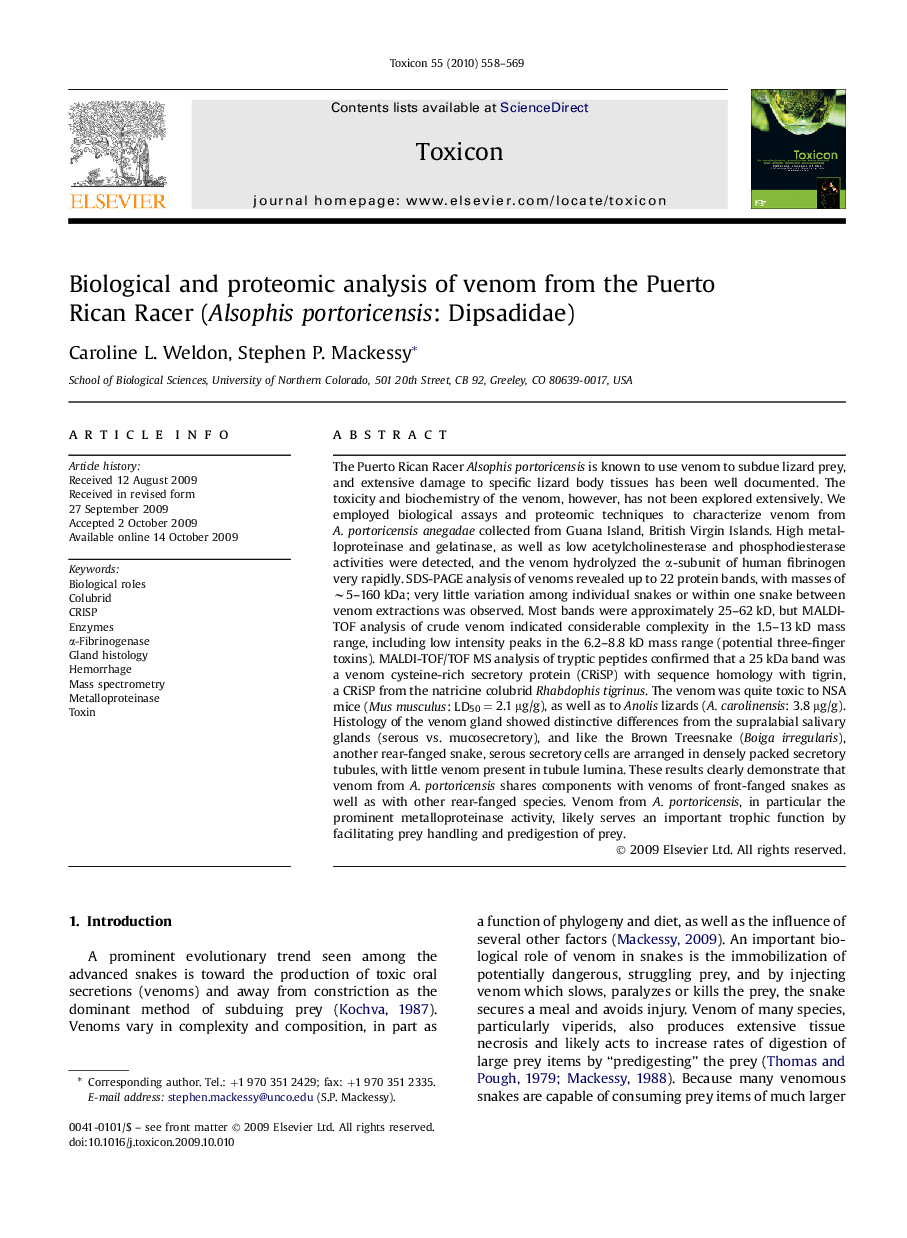| کد مقاله | کد نشریه | سال انتشار | مقاله انگلیسی | نسخه تمام متن |
|---|---|---|---|---|
| 2065355 | 1544179 | 2010 | 12 صفحه PDF | دانلود رایگان |

The Puerto Rican Racer Alsophis portoricensis is known to use venom to subdue lizard prey, and extensive damage to specific lizard body tissues has been well documented. The toxicity and biochemistry of the venom, however, has not been explored extensively. We employed biological assays and proteomic techniques to characterize venom from A. portoricensis anegadae collected from Guana Island, British Virgin Islands. High metalloproteinase and gelatinase, as well as low acetylcholinesterase and phosphodiesterase activities were detected, and the venom hydrolyzed the α-subunit of human fibrinogen very rapidly. SDS-PAGE analysis of venoms revealed up to 22 protein bands, with masses of ∼5–160 kDa; very little variation among individual snakes or within one snake between venom extractions was observed. Most bands were approximately 25–62 kD, but MALDI-TOF analysis of crude venom indicated considerable complexity in the 1.5–13 kD mass range, including low intensity peaks in the 6.2–8.8 kD mass range (potential three-finger toxins). MALDI-TOF/TOF MS analysis of tryptic peptides confirmed that a 25 kDa band was a venom cysteine-rich secretory protein (CRiSP) with sequence homology with tigrin, a CRiSP from the natricine colubrid Rhabdophis tigrinus. The venom was quite toxic to NSA mice (Mus musculus: LD50 = 2.1 μg/g), as well as to Anolis lizards (A. carolinensis: 3.8 μg/g). Histology of the venom gland showed distinctive differences from the supralabial salivary glands (serous vs. mucosecretory), and like the Brown Treesnake (Boiga irregularis), another rear-fanged snake, serous secretory cells are arranged in densely packed secretory tubules, with little venom present in tubule lumina. These results clearly demonstrate that venom from A. portoricensis shares components with venoms of front-fanged snakes as well as with other rear-fanged species. Venom from A. portoricensis, in particular the prominent metalloproteinase activity, likely serves an important trophic function by facilitating prey handling and predigestion of prey.
Journal: Toxicon - Volume 55, Issues 2–3, February–March 2010, Pages 558–569